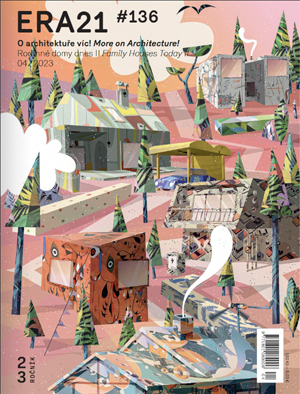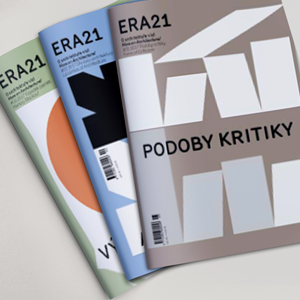During my summer vacation in 1988, when I was waiting for a midnight train in front of the Warsaw Central Station, I managed to exchange Czech koruna for Polish zloty at a bargain. As a sixteen-year-old teenager, I was very surprised that the first passer-by bought the Czech currency. But I didn’t pay much attention to the Central Station itself – the most modern building in Warsaw at that time. Architecture interested me only marginally, I might have just raised my eyes to the top of the Palace of Culture and Science, the highest structure in the city built in the style of socialist realism...
» entire articleThe post-digital contradicts the usual notions of city and architecture, and crosses field boundaries – ideas from media theory, geology, or environmental studies become crucial for understanding the future of architecture in relation to Earth and to individuals. We discussed the definition and meaning of the term “post-digital” in architecture with the Finnish media theorist Jussi Parikka. Additionally we explored the deep history of media technology, non-human agency in urban contexts, the politics of corporations and digital platforms, and the role of architecture in the Anthropocene.
» entire articleChytré technologie se stávají součástí našeho každodenního života. Nenahraditelné místo mají i při zabezpečení nemovitostí, jejich obyvatel a majetku, a to i v případě, že je majitel domu či bytu vzdálený tisíce kilometrů od domova. Domácnosti vybavené chytrými řešeními již přitom nejsou jen výsadou bohatých. Bývají standardem v novostavbách a jejich benefity oceňují i majitelé starších nemovitostí.
» entire articleNa slavnostním galavečeru České ceny za architekturu (ČCA) byly ve čtvrtek 14. listopadu ve Foru Karlín vyhlášeny výsledky 4. ročníku této soutěžní přehlídky České komory architektů (ČKA). Hlavní cenu si převzali Petr Stolín a Alena Mičeková za realizaci Mateřské školy Nová Ruda. Ve finále letošního ročníku České ceny za architekturu porota vybírala mezi šesti stavbami. Vítěz i finalisté se etablovali ze 34 nominovaných prací, které ČKA představila v červnu tohoto roku. Celkově se o Českou cenu za architekturu ve 4. ročníku ucházelo 186 děl dokončených v posledních pěti letech.
» entire articleV Karlovarském kraji vyroste inovativní testovací areál s různými druhy pozemních komunikací pro vývoj autonomní jízdy, elektromobility a asistenčních systémů. Za přípravu a plánování stavebního projektu, označovaného jako „BMW Group Future Mobility Development Center“, je zodpovědný projekční tým DELTA (v čele s architektem a prokuristou Adamem Cifrou, jednatelem Erikem Štefanovičem a architektkou Sabrinou Schubert)...
» entire article


ERA21 vydává ERA Média, s. r. o. |
|
|
Phone: +420 530 500 801 E-mail: redakce@era21.cz |
|
| WEBdesign Kangaroo group, a.s. |